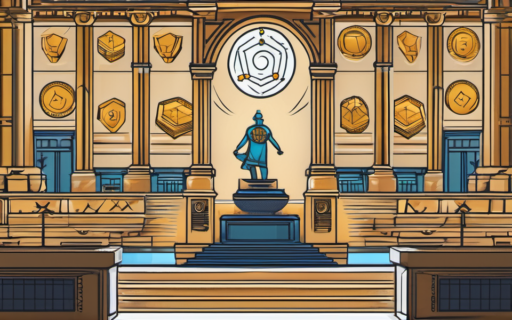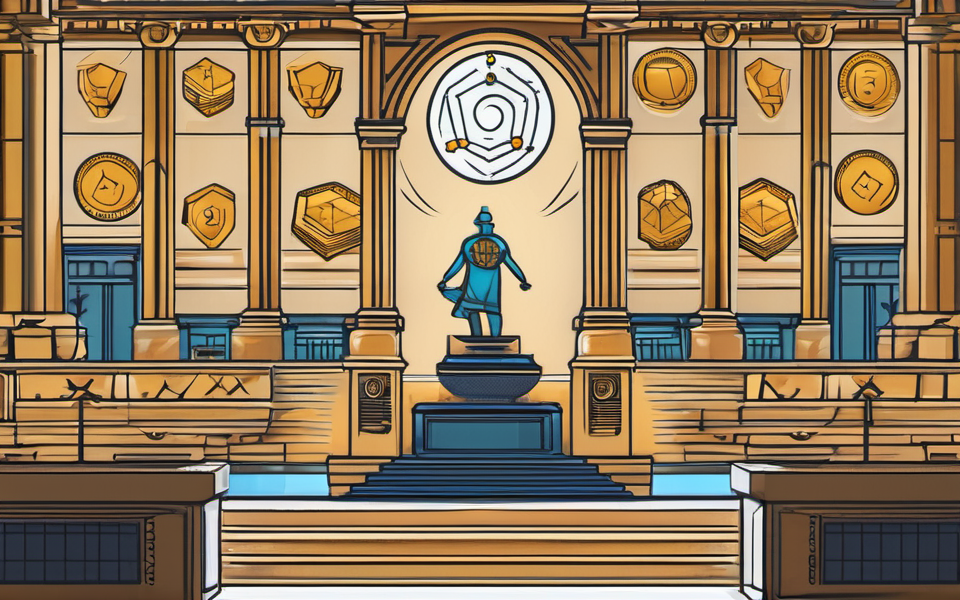You Won’t Believe How Decentralized Exchanges (DEXs) Are Revolutionizing Crypto!
Imagine a world where you could trade cryptocurrencies directly with other users, without the need for a centralized exchange or a middleman. Sounds crazy, right? Well, that’s exactly what decentralized exchanges (DEXs) offer, and they’re becoming a serious force in the crypto space.
Let’s face it, centralized exchanges (CEXs) have had their fair share of security breaches, regulations, and censorship issues. But DEXs are changing the game, offering decentralized trading that’s truly secure, transparent, and empowering. In this article, we’ll explore how DEXs are revolutionizing the world of crypto finance and what this means for you.
The Rise of Decentralized Exchanges: How Did DEXs Become the Next Big Thing?
Before we dive into the benefits, let’s rewind the clock and understand how DEXs emerged.
Early Days of DEXs: From Theoretical Concept to Reality
The concept of decentralized exchanges was born with the rise of blockchain technology and the emergence of cryptocurrencies like Bitcoin. The very first DEX, called EtherDelta, was launched in 2017. However, the early DEXs were limited in features and often struggled with usability.
The Evolution of DEXs: Bringing Decentralization to the Masses
The evolution of DEXs can be categorized into three major stages:
1. First Generation DEXs (2017-2020): These DEXs were primarily based on Ethereum, utilizing smart contracts to facilitate trading. EtherDelta, IDEX, and Uniswap were some of the pioneers. They often faced limitations like low liquidity, slow speeds, and complicated user interfaces.
2. Second Generation DEXs (2020-Present): This generation focused on improving the user experience and enhancing liquidity. This was achieved through:
- Automated Market Makers (AMMs): These are algorithms that determine the price of an asset based on its current supply and demand. Uniswap was the first to successfully implement AMMs, making it one of the most popular DEXs today.
- Order books: These systems, commonly used by centralized exchanges, were also incorporated into some DEXs, allowing for advanced trading strategies and greater liquidity.
3. Third Generation DEXs (Present and Beyond): This current generation is striving to deliver cross-chain compatibility, enabling users to trade crypto assets across various blockchains, and enhance scalability, enabling faster transaction speeds.
The Key Advantages of Using Decentralized Exchanges: Why Choose DEXs?
While CEXs remain a popular option, DEXs are gaining significant traction thanks to their distinct advantages.
1. Decentralized Control: Own Your Crypto, Trade Freely
One of the most appealing aspects of DEXs is the decentralized nature. Your crypto assets are stored in your non-custodial wallet, giving you complete control over them. No more worrying about hacks or breaches like those experienced by CEXs.
But wait, what’s a non-custodial wallet?
Essentially, with a non-custodial wallet, you are the sole holder of the private keys that give you access to your cryptocurrency. You can think of it like having your own physical bank vault, only instead of physical keys, you have a string of letters and numbers, known as a seed phrase, which gives you exclusive access to your wallet.
2. Transparency and Trust: Know What’s Going On
Another advantage of DEXs is the transparency and auditability of the system. The smart contract code, which is publicly available on the blockchain, can be reviewed and verified by anyone. This provides auditable records of all transactions, eliminating the need to trust any intermediary.
This transparency ensures fair and predictable behavior of the exchange, minimizing the risk of manipulation or unfair trading practices that can plague CEXs.
3. Privacy and Anonymity: Trade Without Giving Up Your Personal Information
DEXs typically offer a higher level of privacy and anonymity, compared to their centralized counterparts.
How does this work?
Unlike CEXs, DEXs don’t require you to provide extensive personal information, like KYC (Know Your Customer) verification. This allows you to trade cryptocurrencies anonymously, enhancing privacy and protecting you from potential identity theft.
However, it’s important to remember that blockchain transactions are inherently publicly recordable. While you might be able to trade without revealing your identity, the transactions themselves can be viewed on the blockchain explorer by anyone.
4. Global Accessibility: Trade Anytime, Anywhere
DEXs can be accessed by anyone, anywhere in the world, thanks to their decentralized nature. No need to be restricted by location or subject to any limitations enforced by central authorities.
This global accessibility offers greater freedom to traders and makes cryptocurrency trading more inclusive for individuals across borders.
5. Resistance to Censorship: Freedom from Government Interference
DEXs are designed to be resistant to censorship, meaning they cannot be shut down or blocked by governments or other entities. This resilience makes them particularly attractive for users who value financial freedom and privacy in jurisdictions where access to traditional financial services is limited.
What are the Drawbacks of DEXs? Things to Consider Before You Trade
Although DEXs are quickly gaining popularity, it’s important to consider a few downsides:
1. Lower Liquidity: Trading Volume May Be Limited
The overall liquidity on DEXs is still lower compared to centralized exchanges. This means that the volume of trades is smaller, and it may be challenging to find a counterparty to execute a large order, potentially resulting in slippage. This is especially true for lesser-known or less volatile cryptocurrencies.
What is slippage?
Slippage occurs when the price of an asset fluctuates between the time you place your trade and when it’s executed, resulting in you buying or selling at a price that differs from your desired target price. It’s something that you need to be mindful of when trading on DEXs, especially for large orders.
2. Complexity of User Interface: Not Always User-Friendly
While DEXs have made significant improvements in usability, they can still be more complex to use for newcomers compared to centralized exchanges.
Think of it this way: imagine a streamlined system (like CEXs) vs a system with multiple components, requiring you to manage wallets and interact with blockchains (like DEXs). This is where we find some of the barriers to adoption.
3. Security Considerations: Know How to Protect Your Crypto
Because you are in complete control of your private keys on a DEX, you are responsible for safeguarding your crypto assets. This means having to learn about different security best practices and implementing proper precautions. It’s essential to use secure non-custodial wallets and be aware of common phishing and social engineering scams.
Key Takeaways
Here are the main points we covered about DEXs:
- Decentralized Control: You own your keys and control your crypto.
- Transparency and Trust: Publicly verifiable code for transparent trading.
- Privacy and Anonymity: Trade without sharing personal information.
- Global Accessibility: Access the platform from anywhere in the world.
- Resistance to Censorship: Enjoy financial freedom from limitations.
Although there are some drawbacks, DEXs are becoming more user-friendly and accessible, offering exciting possibilities for the future of crypto finance. By embracing decentralized exchanges, you can gain more control over your financial freedom and contribute to a truly decentralized financial system.
Are you ready to jump into the exciting world of decentralized trading? Start your crypto journey with a DEX today!






